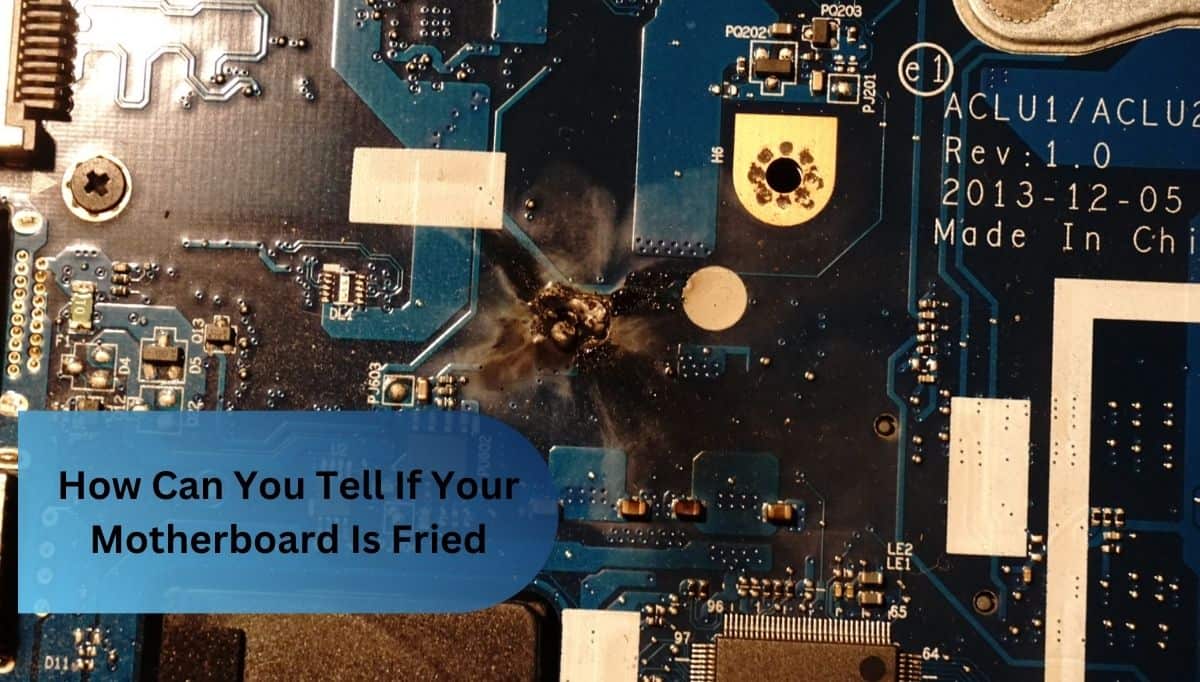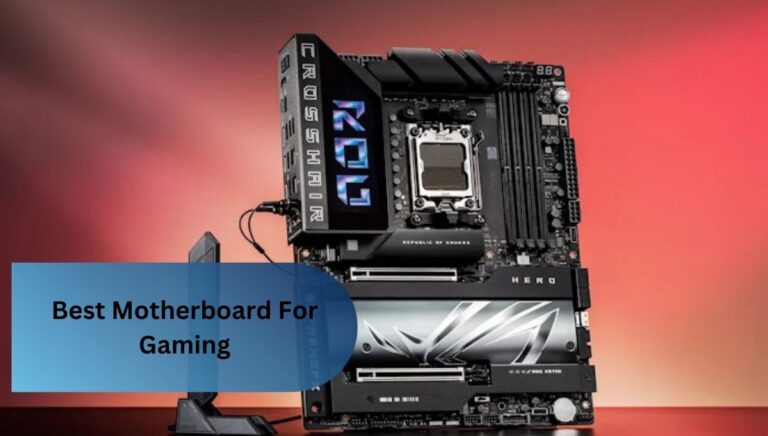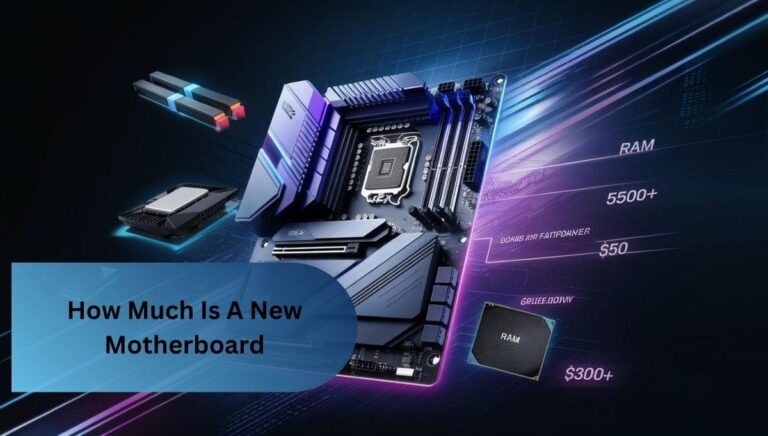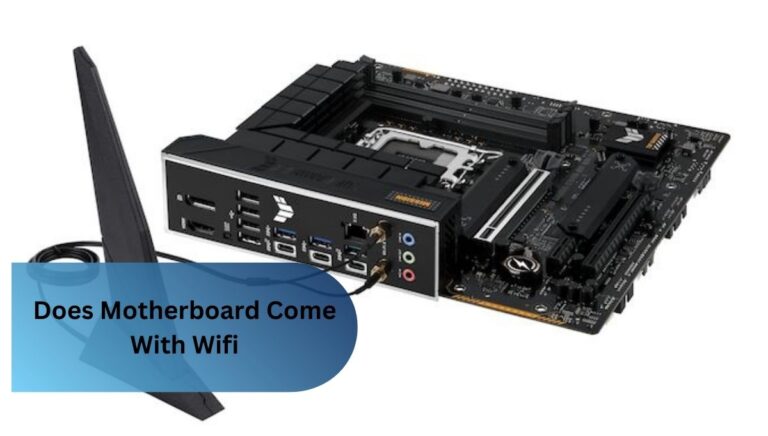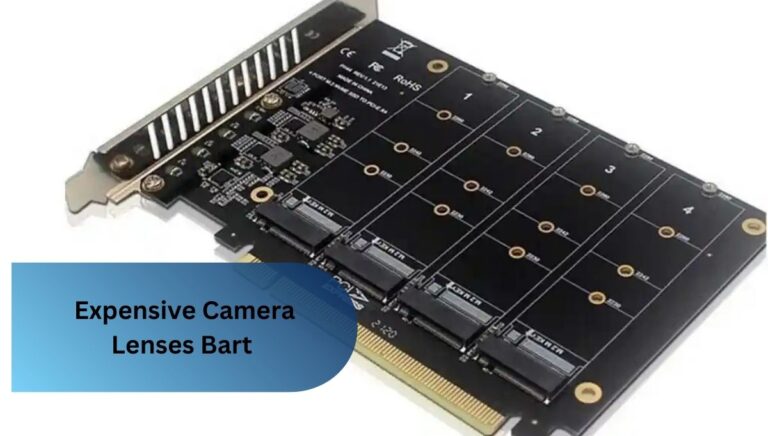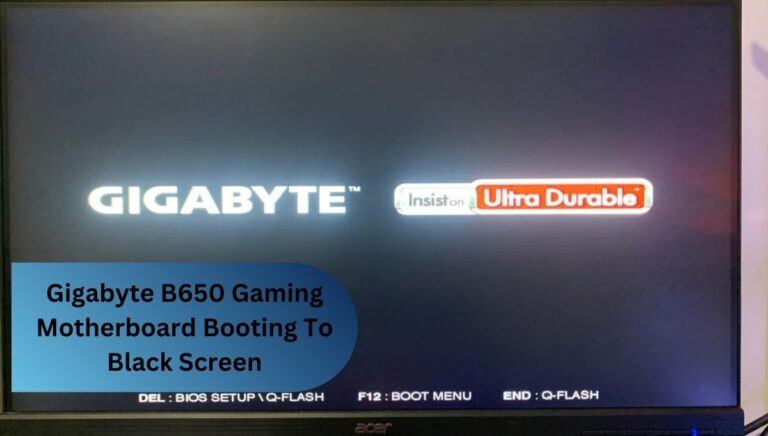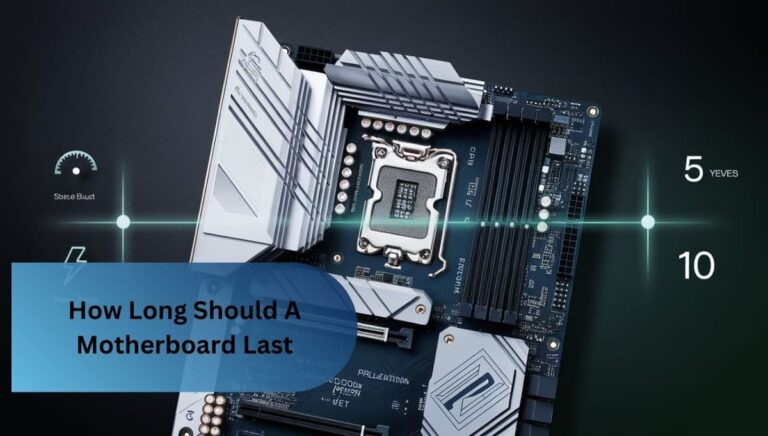How Can You Tell If Your Motherboard Is Fried – Ready To Diagnose Your Motherboard!
One time, my computer unexpectedly shut down, leaving it completely unresponsive—no lights or sounds at all. After detecting a burning smell and spotting a damaged capacitor on the motherboard, I realized it was fried, and replacing it restored my PC to working order.
You can tell if your motherboard is fried when your computer shows no signs of power, gives off a burning smell, or has visible damage like scorched components. Random crashes and unresponsive peripherals are also key indicators.
Introduction How Can You Tell If Your Motherboard Is Fried
Understanding how can you tell if your motherboard is fried is essential for any computer user. A motherboard is a crucial component that connects all parts of your system, so knowing how can you tell if your motherboard is fried can save you time and frustration.
Common signs include strange noises, sudden crashes, and the absence of power, all of which indicate how can you tell if your motherboard is fried. Additionally, if you notice unusual smells or scorched components, you’re likely facing a serious issue that confirms how can you tell if your motherboard is fried. By being aware of these signs, you can address the problem quickly and ensure your computer remains functional.
What Is A Motherboard?
A motherboard is like the backbone of a computer, providing the essential framework that connects all its components. It acts as a central hub, facilitating communication between the CPU, RAM, storage devices, and various peripherals. This complex circuit board houses slots for these essential parts, allowing them to work together harmoniously.
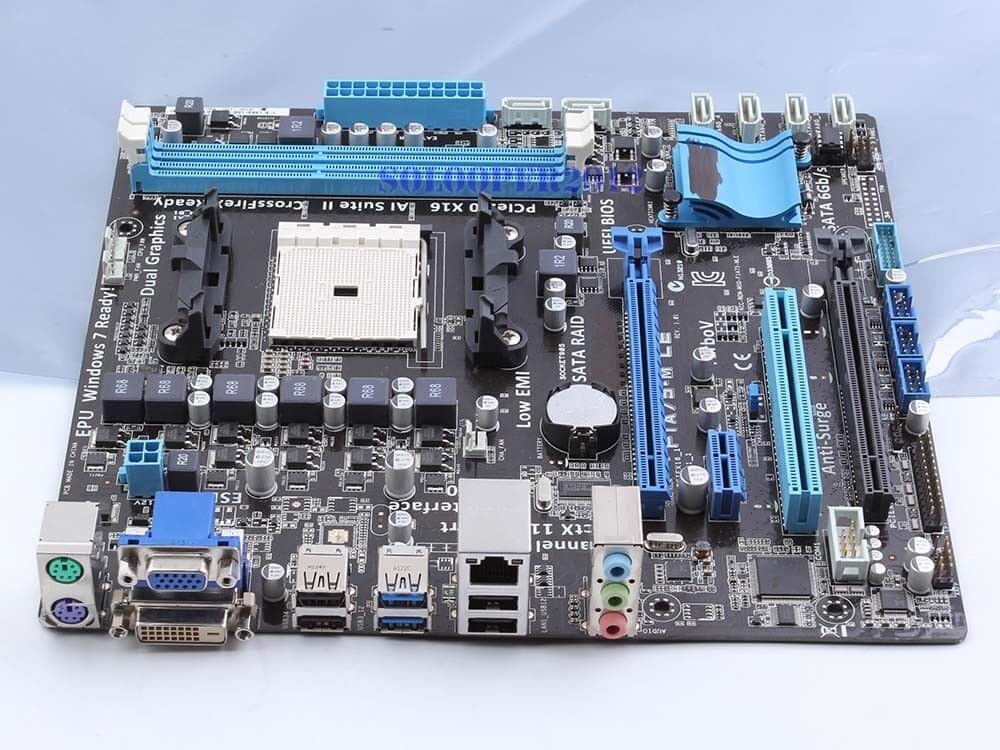
Additionally, the motherboard comes with built-in connectors and circuits that enable power distribution and data transfer, making it crucial for the computer’s functionality. Essentially, without a motherboard, a computer cannot operate, as it coordinates everything from processing data to managing input and output devices.
Signs Your Motherboard May Be Fried
1. No Power or Unresponsive Computer:
- Total Silence: When you press the power button and hear nothing—no fans spinning, no lights—your computer might not be getting power.
- No Response from Monitors: If your screen remains blank despite being connected, it indicates your system isn’t booting up.
- Lights Out: When the power indicator lights on the case don’t illuminate at all, it’s a strong sign of an issue.
- Dead Fans: If the cooling fans don’t start spinning, it could mean the motherboard isn’t functioning.
- Unplugged Power Supply: Sometimes, a loose power cable or faulty power supply can mimic motherboard failure, so check your connections first.
2. Burning Smell or Scorched Components:
A burning smell coming from your computer is a serious warning sign that something may be overheating or malfunctioning, often pointing to a fried motherboard. Additionally, if you notice scorched components, such as discolored capacitors or burnt traces on the motherboard, it indicates severe electrical damage that needs immediate attention.
3. Beeping Sounds:
- Patterned Alerts: Different series of beeps from your computer can signal specific issues, with the pattern acting as a coded message from the motherboard.
- Warning Signals: A consistent beeping noise when you power on could mean a hardware problem, often related to memory or graphics issues that might involve the motherboard.
- Troubleshooting Tune: Pay attention to the length and frequency of the beeps, as they guide you toward diagnosing the problem and determining if the motherboard needs repair or replacement.
4. Random Crashes or Freezes:
Random crashes or freezes can be frustrating signs that your computer may be struggling, often due to a failing motherboard. When the system suddenly shuts down or becomes unresponsive, it disrupts your work and points to potential underlying issues with the motherboard’s ability to communicate with other components.
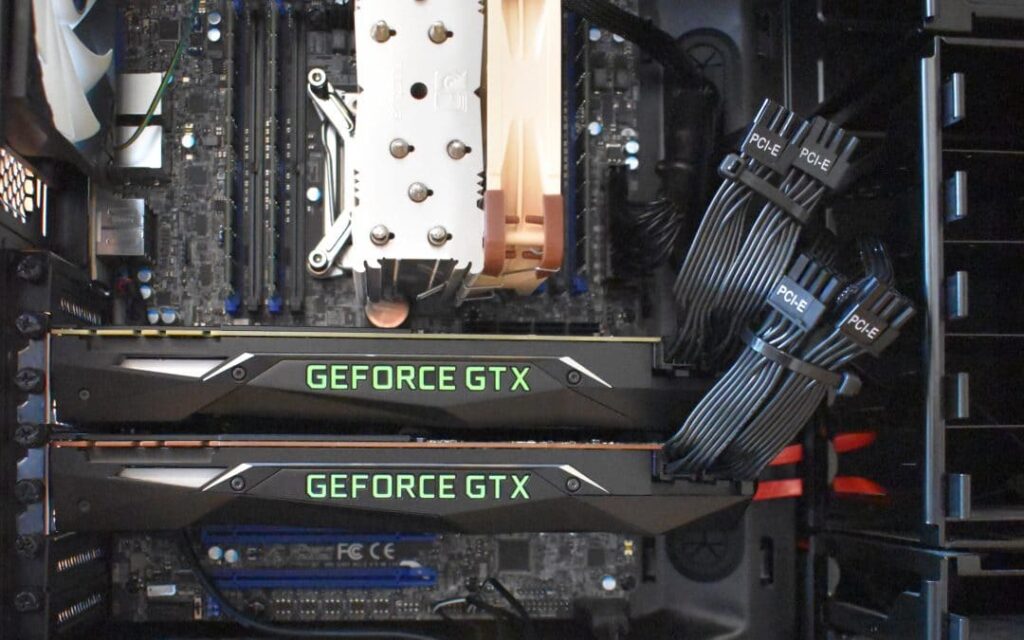
- Unresponsive USB Ports: If your keyboard, mouse, or external drives are not detected when plugged in, it could signal motherboard issues affecting connectivity.
- Missing Devices in Settings: When you check your computer settings and see that peripherals are absent from the list, it suggests that the motherboard may not be recognizing them.
- Intermittent Functionality: If devices work occasionally but fail to connect consistently, this could indicate a faulty motherboard struggling to maintain proper connections.
5. Peripheral Devices Not Recognized:
- Unresponsive USB Ports: If your keyboard, mouse, or external drives are not detected when plugged in, it could signal motherboard issues affecting connectivity.
- Missing Devices in Settings: When you check your computer settings and see that peripherals are absent from the list, it suggests that the motherboard may not be recognizing them.
- Intermittent Functionality: If devices work occasionally but fail to connect consistently, this could indicate a faulty motherboard struggling to maintain proper connections.
Testing Your Motherboard
1. Check for Power Supply Issues:
Before concluding that the motherboard is faulty, it’s important to inspect the power supply since a malfunctioning PSU can stop your computer from powering up. Check all cables to ensure they are firmly connected and confirm that the power supply is providing the right voltage, as this simple step might fix the problem.
2. Test With Another CPU:
- Swap the Processor: Replace the current CPU with a known working one to see if the problem lies with the motherboard or the original processor.
- Monitor the Boot Process: If the system powers on and functions normally after the CPU swap, the issue likely resides with the old processor.
- Rule Out the Motherboard: If the new CPU doesn’t fix the issue, it’s a strong indication that the motherboard may be at fault.
3. Use a Multimeter:
Using a multimeter can help you measure the voltage across various points on the motherboard to check for power irregularities. By testing for shorts or faulty circuits, you can pinpoint if electrical failure is causing the motherboard to malfunction.
What to Do if Your Motherboard is Fried
If your motherboard is fried, the first step is to confirm the issue and take immediate action to prevent further damage to your system. In most cases, repairing a motherboard is difficult and costly, so replacing it is often the best solution. Consider your options based on your budget and the compatibility of the replacement with your existing components.
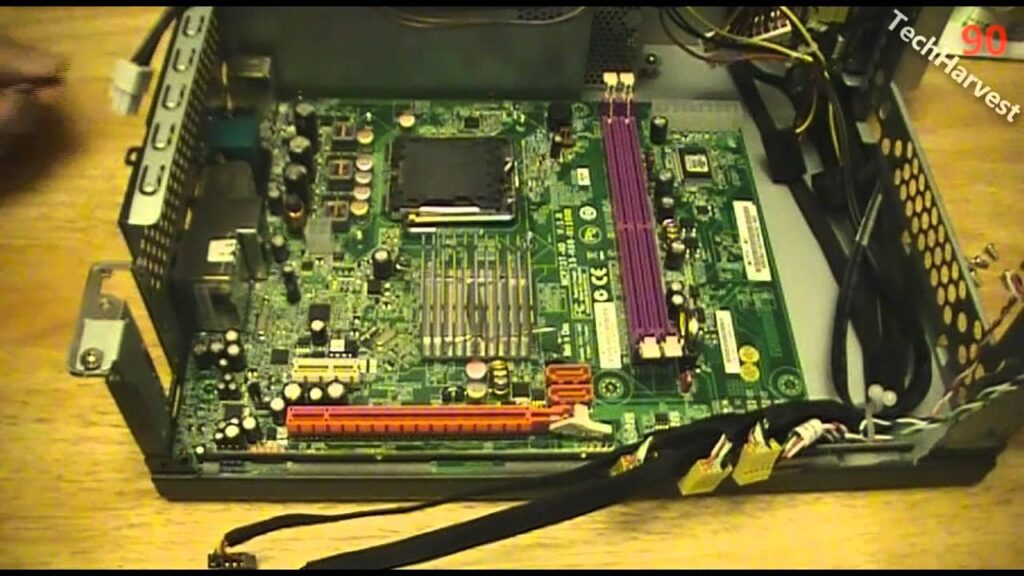
- Replace the Motherboard: Purchase a new motherboard that is compatible with your CPU, RAM, and other components.
- Consult a Technician: If you’re unsure about diagnosing or replacing the motherboard yourself, a professional can help.
- Back Up Data: Before replacing or repairing anything, ensure you’ve backed up any important data if your storage devices are still functional.
FAQ’s
1. How do I know if my motherboard is replaced?
To know if your motherboard has been replaced, check for signs of new components, such as different ports or updated features that weren’t present before. Additionally, if your computer is running smoothly without previous issues, it’s a strong indication that the motherboard replacement was successful.
2. Can a broken GPU fry a motherboard?
Yes, a broken GPU can potentially fry a motherboard if it shorts out or causes excessive heat. When a graphics card fails, it may send electrical surges to the motherboard, leading to damage in the circuits and components connected to it.
3. Can water fry a motherboard?
Water can definitely fry a motherboard if it gets into the circuitry and causes short circuits. Even tiny amounts of moisture can interfere with electrical connections, resulting in permanent damage and causing the system to fail completely.
4. Is it OK to replace motherboard?
Yes, replacing a motherboard is often a practical solution when it’s damaged or outdated. It can breathe new life into your computer, allowing you to upgrade components and improve performance, making it a worthwhile investment.
5. Can a heavy GPU damage the motherboard?
A heavy GPU can damage the motherboard if it puts too much stress on the PCIe slot or the surrounding area. Over time, the weight may cause physical bending or cracking of the motherboard, leading to poor connections and potential failure.
Conclusion:
Recognizing the signs of a fried motherboard is crucial for maintaining your computer’s health. From strange noises and burning smells to unresponsive peripherals, these indicators can help you diagnose the issue early.
By staying alert to these symptoms, you can take the necessary steps to troubleshoot or replace the motherboard, ensuring your system runs smoothly and efficiently.
